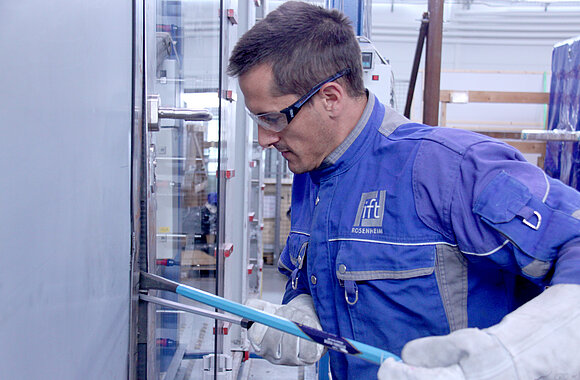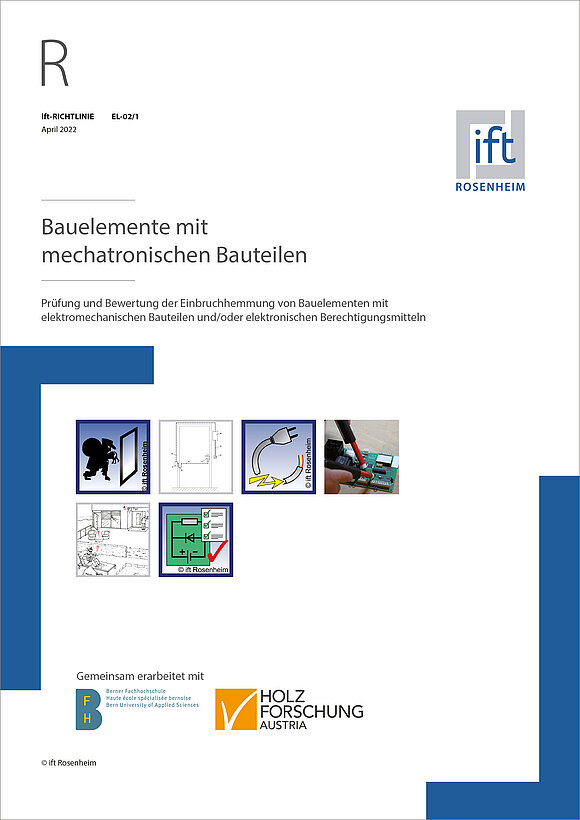Reading time: 3 minutes
According to police statistics, the number of burglaries is currently falling, but there is no reason to give the green light - burglar resistance is still an important issue in the industry. The burglary standards DIN EN 1627 to DIN EN 1630 were revised in 2021.
This article was automatically translated from German into English with the help of DeepL.com.
Burglar resistance has been a hot topic in recent years, and manufacturers have brought good developments onto the market that make life difficult for burglars. Tests at ift Rosenheim have shown that developers now have a high level of expertise and that supposed weak points in the units have been very well identified and corrected.
However, the falling burglary figures should not be a cushion on which to rest, as the general situation of recent years must be taken into account: There were travel and exit restrictions, many people were working in home offices. This was therefore not the ideal breeding ground for criminals to pursue their goals undisturbed. In recent months, however, the situation has normalized and people are spending more time outermost again. It can therefore be assumed that the number of burglaries will also rise again. Prevention work is and will therefore remain important, and the focus must continue to be on burglar resistance, especially in new buildings, but also in refurbishments.
In 2022, resistance class RC2 was still the most frequently tested and used class to prevent so-called opportunist burglars from breaking in. RC1 as a basic security class is less common, which is certainly also due to the fact that the police only include manufacturers of units from RC2 in the KPK list (the Police Crime Prevention Commission's list of manufacturers of tested and certified burglar-resistant products). However, it should also be noted that RC3 units - especially in the door sector - are on the increase and some door manufacturers even sell RC3 as standard. A certain trend towards higher Classes is therefore discernible.

EN 1627ff
A revision of EN 1627ff was urgently required, as the previous version dated back to 2011. We are currently working with DIN 1627:2021ff. The amendments regarding the test are rather moderate and manageable. The basic concept of static, dynamic and manual testing has been retained. Adjustments are mainly in the specification of the test and the updating of the cited standards experts, e.g. in the extensive area of door and window hardware. In addition, hardware without the corresponding Evidence of Performance can now be assessed directly as part of the burglary test. The use of electromechanical hardware is now also possible.
It is also important to note that the use of existing test certificates - keyword "use of historical data" - has not changed as a result of the standard revisions. It is generally possible to use historical evidence, although it should be noted that evidence prior to DIN EN 1627:2011 will no longer be taken into account in future ift certification schemes.
In addition, the National Annex to DIN 1627:2021 has extended the possibility of installing burglar-resistant building components in highly thermal insulating wall components, so that installation companies can be sure that they are at the ground of standardization for this type of installation.

Electromechanical hardware
In private new buildings, many entrance doors are now equipped with electronic locks and access systems, so the question of burglar resistance is highly topical. DIN 1627:2021 therefore adds electromechanically operated locks, door fittings and locking cylinders, which must meet the requirements of EN 14846, EN 16867 and EN 15684, depending on the burglary class. In addition, manipulation of areas in which uncoded cables run must be constructively secured. E.g. it must not be possible to reach such cables using manual tools. Further specific points on this and on the requirements for access control systems such as ICC, PIN code, access cards, biometrics or key switches are not currently mentioned. A supplementary standard on this is currently in thesis.
However, as electromechanical components must also have a solid burglary resistance, ift Rosenheim, together with Holzforschung Austria (Austrian Forest Research Society) and the Biel Technical College, has in the meantime drawn up guideline EL-02/01 "Construction elements with mechatronic components - testing and assessment of the burglary resistance of building elements with electromechanical components and/or electronic authorization devices", with which these products can also be sensibly assessed and included in an ift test evidences.

